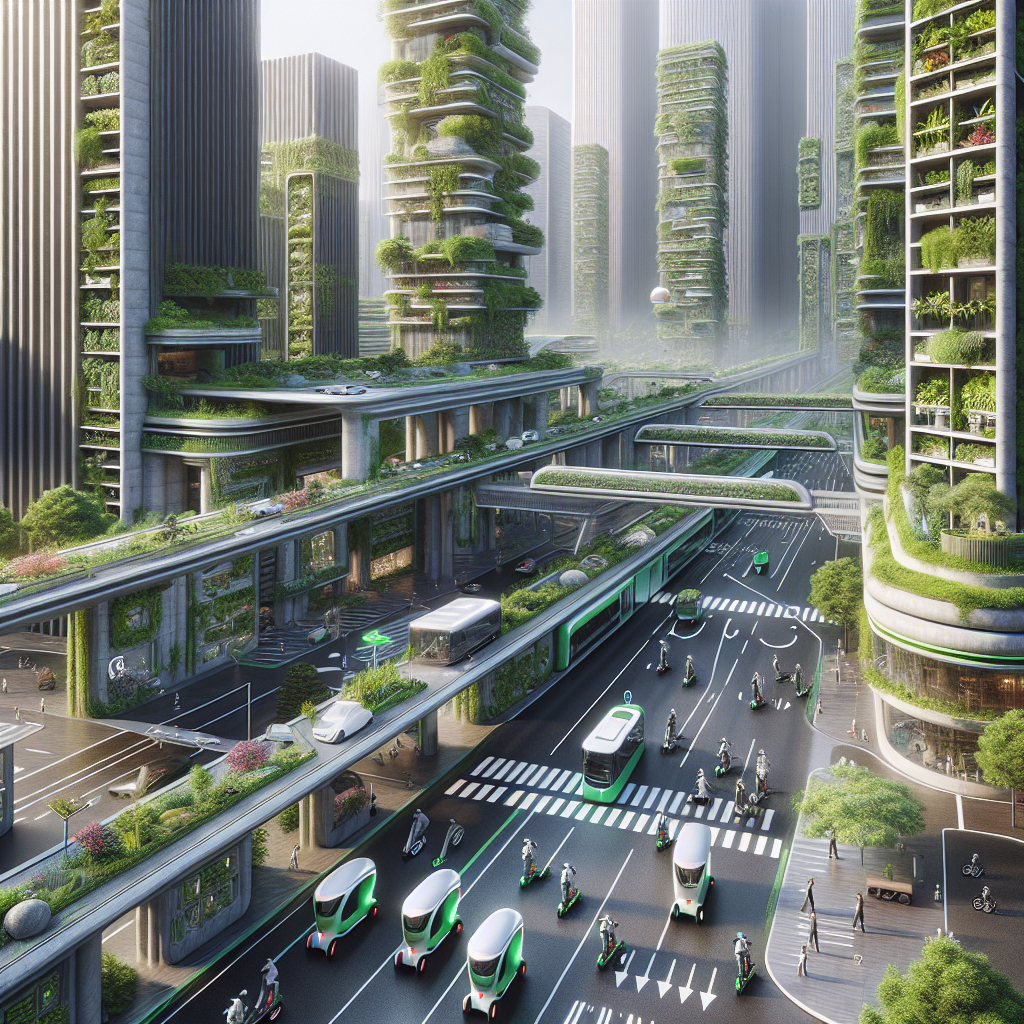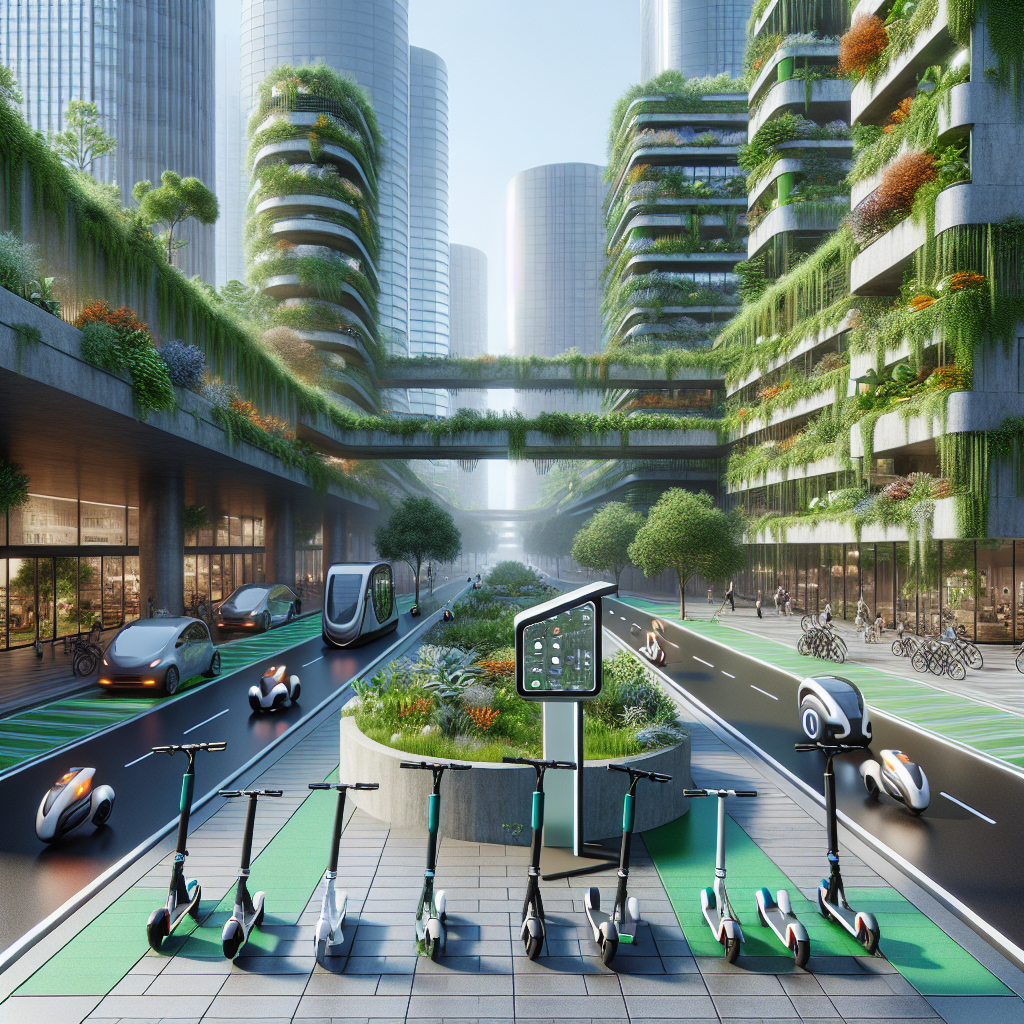Micromobility Solutions: Transforming Urban Transportation

Micromobility Solutions: Transforming Urban Transportation
In the heart of today’s rapidly evolving cities, the traditional paradigms of transportation are undergoing a quiet yet profound revolution. Micromobility solutions—compact, lightweight vehicles designed for short-distance travel—are not merely reshaping how we move; they are fundamentally redefining urban landscapes, architecture, and design. From electric scooters and bicycles to innovative personal transit pods, these solutions are seamlessly integrating into our urban fabric, influencing everything from street layouts to building designs. For architects, designers, and urban planners, understanding this shift is essential to crafting cities that are sustainable, livable, and aesthetically inspiring.
The Rise of Micromobility: A Response to Urban Challenges
As urban populations swell, cities face unprecedented challenges: congestion, pollution, and limited space. Traditional vehicles, with their substantial footprints and environmental impact, are increasingly unsustainable. Micromobility emerges as a compelling alternative, offering eco-friendly transportation options that are both efficient and space-conscious. According to a recent study by McKinsey & Company, micromobility could potentially account for up to 15% of passenger kilometers traveled in urban areas by 2030, significantly reducing congestion and emissions (source: Wikipedia).
Designers and architects are now tasked with reimagining urban spaces to accommodate this shift. Streets once dominated by cars are evolving into vibrant, pedestrian-friendly corridors lined with greenery, public art, and dedicated micromobility lanes. This transformation aligns with broader sustainability goals, echoing the principles outlined in our previous exploration of the path to net-zero for design and architecture.
Integrating Micromobility into Urban Design
The integration of micromobility into urban design requires thoughtful planning and innovative architectural solutions. Cities such as Copenhagen and Amsterdam have long championed bicycle-friendly infrastructure, but contemporary micromobility solutions demand even more nuanced design considerations. Charging stations, secure parking areas, and seamless connectivity with public transit systems are becoming essential elements of urban planning.
Consider the recent redevelopment of Paris in preparation for the 2024 Summer Olympics. The city has invested heavily in micromobility infrastructure, creating dedicated lanes and parking hubs that blend harmoniously with the city’s historic architecture. This initiative, detailed in our earlier analysis of Paris 2024’s architectural transformation, demonstrates how micromobility can enhance urban aesthetics while promoting sustainability.
Architectural Innovations Inspired by Micromobility
Micromobility is not only reshaping city streets but also influencing architectural design at a fundamental level. Buildings are increasingly incorporating features tailored to micromobility users, such as ground-floor scooter docks, bicycle storage integrated into interior layouts, and even dedicated pathways connecting directly to transit hubs.
One striking example is the Bosco Verticale in Milan, a pair of residential towers renowned for their lush vertical gardens. Beyond their biophilic appeal—a concept we’ve explored in-depth in our article on biophilic design and human well-being—these towers also integrate extensive bicycle storage and direct access to micromobility routes, embodying a holistic approach to sustainable urban living.
Micromobility and the Evolution of Public Spaces
The rise of micromobility solutions has profound implications for public spaces. Urban plazas, parks, and squares are being redesigned to accommodate and encourage micromobility use, fostering community interaction and enhancing the urban experience. For instance, Barcelona’s Superblocks initiative has transformed city blocks into pedestrian-first zones, dramatically reducing vehicle traffic and creating vibrant communal spaces filled with greenery, seating areas, and dedicated micromobility lanes (source: Wikipedia).
These transformations echo the ancient wisdom we’ve discussed in our exploration of ancient desert architecture, where community-centric design principles prioritized pedestrian movement and communal spaces, underscoring the timeless value of human-scale urban environments.
Designing for Safety and Accessibility
As micromobility solutions proliferate, ensuring safety and accessibility becomes paramount. Urban designers and architects must navigate the delicate balance between accommodating new transportation modes and preserving pedestrian safety. Innovative design strategies, such as clearly delineated lanes, intuitive signage, and traffic-calming measures, are essential to creating harmonious urban environments.
Moreover, accessibility considerations are critical. Inclusive design principles, as discussed in our previous article on inclusive playgrounds, must extend to micromobility infrastructure, ensuring that these solutions are available and usable by all city residents, regardless of age or ability.
Future Visions: Micromobility and Smart Cities
Looking ahead, the convergence of micromobility and smart city technologies promises exciting possibilities. Autonomous micromobility vehicles, integrated digital platforms for seamless multimodal transportation, and real-time data analytics to optimize urban mobility are just a few innovations on the horizon. Cities like Singapore and Dubai are already pioneering these advancements, leveraging technology to create intelligent, responsive urban environments.
The integration of micromobility into smart city frameworks aligns with broader technological trends we’ve explored, such as smart home technology and autonomous vehicles’ impact on urban design. Together, these innovations are reshaping our urban future, promising cities that are not only sustainable but also profoundly human-centric.
Conclusion: Embracing Micromobility as a Design Imperative
Micromobility solutions represent more than a transportation trend; they embody a fundamental shift in how we conceive and design urban spaces. For architects, designers, and urban planners, embracing micromobility is not merely an option—it’s an imperative. By thoughtfully integrating these solutions into our cities, we can create environments that are sustainable, accessible, and profoundly livable, enriching the urban experience for generations to come.
As we continue to explore and innovate, micromobility will undoubtedly remain at the forefront of urban design discourse, inspiring new architectural forms, reshaping public spaces, and redefining the very essence of urban living.
For further reading on sustainable urban innovations, explore our detailed analyses on vertical farming and green roofs transforming urban landscapes.
In embracing micromobility, we are not merely changing how we move—we are redefining how we live.








